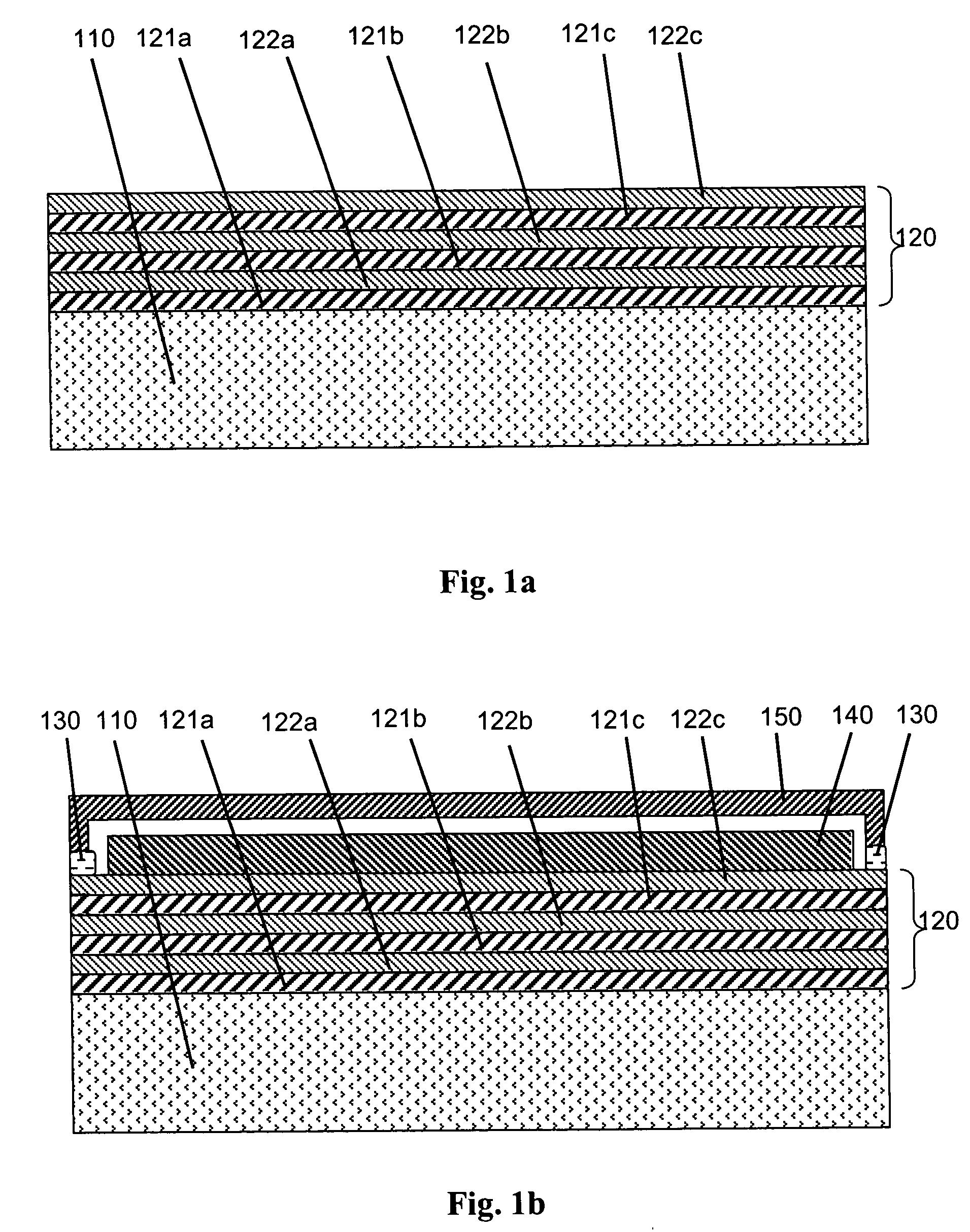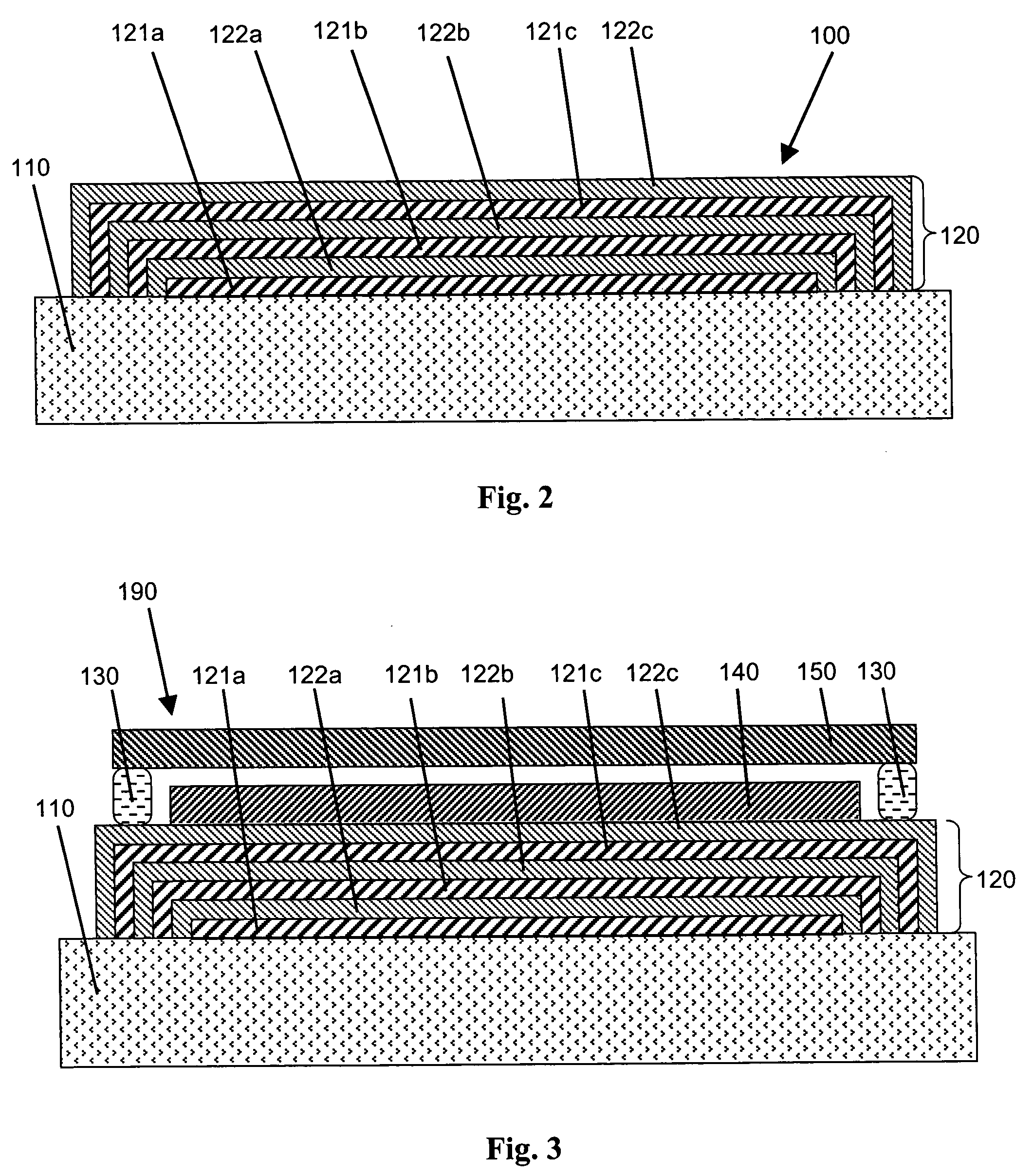Methods and structures for reducing lateral diffusion through cooperative barrier layers
a barrier layer and cooperative technology, applied in the field of structures, can solve the problems of limiting the lifetime of devices, and the components of various other organic optoelectronic devices are likewise susceptible to attack from exterior environmental species, so as to reduce adverse effects
- Summary
- Abstract
- Description
- Claims
- Application Information
AI Technical Summary
Benefits of technology
Problems solved by technology
Method used
Image
Examples
Embodiment Construction
[0027]The present invention now will be described more fully hereinafter with reference to the accompanying drawings in which preferred embodiments of the invention are shown. This invention may, however, be embodied in different forms and should not be construed as limited to the embodiments set forth herein.
[0028]As used herein, a “layer” of a given material includes a region of that material whose thickness is small compared to both its length and width. Examples of layers include sheets, foils, films, laminations, coatings, and so forth. As used herein a layer need not be planar, but can be bent, folded or otherwise contoured, for example, to at least partially envelop another component.
[0029]Referring now to FIG. 2, a covered substrate 100 is shown in accordance with an embodiment of the invention. The covered substrate 100 includes a substrate layer 110 and a barrier region 120 (which is composed of multiple cooperative barrier layers as discussed below) disposed on the substr...
PUM
 Login to View More
Login to View More Abstract
Description
Claims
Application Information
 Login to View More
Login to View More - R&D
- Intellectual Property
- Life Sciences
- Materials
- Tech Scout
- Unparalleled Data Quality
- Higher Quality Content
- 60% Fewer Hallucinations
Browse by: Latest US Patents, China's latest patents, Technical Efficacy Thesaurus, Application Domain, Technology Topic, Popular Technical Reports.
© 2025 PatSnap. All rights reserved.Legal|Privacy policy|Modern Slavery Act Transparency Statement|Sitemap|About US| Contact US: help@patsnap.com



